Rolex
Close
Patek Philippe
Close
Close
One to Watch explores why the vintage luxury watch market is booming despite Covid-19, with advice on how to make a solid investment in these uncertain times.
Like every other industry, the luxury watch market has been forced to react quickly to the Covid-19 crisis. Late 2019 saw a boom in new watch sales – especially for Rolex. But, as the pandemic has spread, both Patek Philippe and Rolex (amongst many others) have announced a hold on new releases in 2020.
On top of that comes the recent news that five of horology’s biggest world players will exit Baselworld in 2021, and that many luxury watch manufacturers have temporarily closed due to coronavirus, leading to a stock deficit. David Duggan Watches has no doubt that the new watch market will recover and go from strength to strength. The good news for timepiece enthusiasts right now, though, is that the vintage market is not just surviving but thriving.
It’s not the first time we have seen a boom like this, either. The rise of the vintage market in 2010 and beyond saw the industry’s value soar to an estimated £2.5bn. That growth seems to be exponential, and not just when it comes to rare and extraordinary pieces.
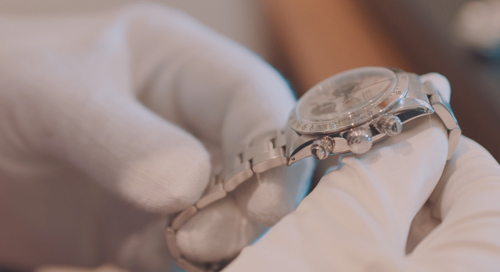
The internet has also been a game changer. Buyers can now inform themselves on market values at the touch of a button, equipping them to make savvy purchases and rendering the market more competitive, as well as more accessible. So, it has never been easier to source a vintage timepiece, even at an entry level price point. Consumers are turning to vintage as a sound investment strategy likely to hold its value, even as the world loses its certainty.
Like any other investment, it is important to remember that the value of vintage watches can go down as well as up. However, with record numbers participating in vintage watch auctions, this is clearly an area where buyers are willing to dive in. There are a number of reasons for that.
Firstly, a wisely chosen vintage timepiece offers the prospect of a healthy return on investment at some point, as long as you are willing to bide your time. Few of us will ever be lucky enough to experience a sale like Eric Clapton’s iconic Daytona (previously bought for £44,000 and eventually selling in 2015 for a cool £1.4M), or the fairy-tale Henry Graves Supercomplication by Patek Philippe, which commanded £20.6M in Sotheby’s Geneva auction room. But, with careful research and the advice of an experienced vintage watch specialist, homing in on a watch that is likely to at least hold – and hopefully increase – its value is an achievable goal. During a time of financial uncertainty, a physical commodity like a watch represents a comparatively dependable investment.
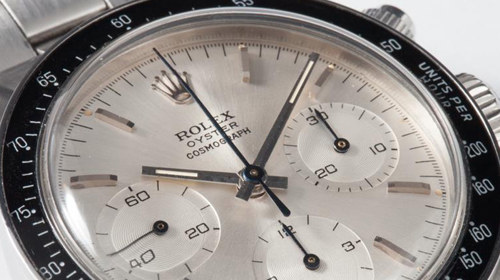
What’s more, stock deficits in the new watch market are prompting high demand for vintage. Any keen Rolex fan for example, will lament the ongoing shortage of newly crafted steel watches. Yet steel and steel/gold models are becoming increasingly popular (especially amongst women seeking oversized watches). When such a gap emerges, the vintage market is ready to fill it, and consumers are keen to buy.
Vintage, though, is about far more than demand and profit. When you purchase a pre-owned watch, you buy a story as well as a commodity. In a world awash with new technology, nothing compares to the pleasure of owning a piece of true craftsmanship, designed to last, and infused with nostalgia. To quote Patek Philippe: “You never really own a Patek Philippe, you merely look after it for the next generation”. Similar is true of the mechanical precision of Rolex, the evocative beauty of Cartier, or the affordable luxury of a modern Tudor classic. A vintage timepiece is a deeply personal purchase, not just for its style or quality, but for the story behind the watch. No wonder, then, that during a time of global crisis, so many watch enthusiasts are seeking comfort in a market with such emotive connections.
Precisely because the market is so ripe, you should always stick to some basic principles when you venture into vintage. Here are some basic tips to get you started.
Simplicity holds its value: If your purchase is investment-led, then choose a classic model which highlights the traditions of fine watchmaking without too many whistles and bells. Diamonds, gemstones, and whacky designs go in and out of fashion quickly. Craftsmanship and timeless aesthetics are always popular. So, if your goal is a degree of financial certainty, think classic.
Sound advice is key: Especially as the world of watches moves online, it’s easy to be seduced by the prospect of a quick purchase based on a photograph. We would never advise this. The world of watches is awash with fakes, so turn to a trusted vintage watch dealer who can advise you personally. Even now, when a showroom visit is unlikely to be possible, a reputable specialist will be happy to take the time to discuss your priorities by phone and help you to identify a genuine model that is perfect for you.
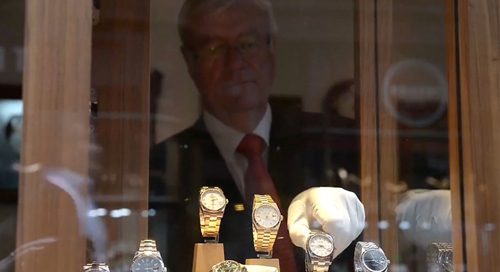
Think about security: When personal collection is not possible, you need to consider how you will pay for your watch, how it will reach you and where you plan to keep it. Discuss these issues with your dealer – and with your insurance company, which is likely to attach security conditions to any policy you take out on the watch (and you certainly should be doing just that).
Factor in maintenance: Vintage watches require regular servicing to keep them in immaculate condition. During the coronavirus pandemic, service centres will largely be closed. So, be clear on the watch’s condition when you buy it. Has it been serviced before sale? When is its next service due and what is the likely cost? Does your dealer offer an official service centre? Are they able to accept and service your watch by courier? Answering these questions at the start will ensure that you have a realistic plan to protect your investment.
Investigate providence: A watch with a strong history can command astonishing prices. A Rolex GMT Master ref. 1675, for example, might usually sell for around $20,000. Marlon Brando’s GMT Master, on the other hand, came in at a cool $1.95M at Christie’s in late 2019, thanks to its infamous connection. Granted, the chances of stumbling across such an iconic one-off are extremely slim for most of us. But providential details such as the original case, authentication certificate and any evidence of notable history are all desirable when it comes to choosing a vintage timepiece.
The watch market can seem overwhelming, especially if this is your first venture into investing. Here is some inspiration, with David Duggan’s personal recommendations as to three of the market’s current high-flyers – plus an insider tip.
The Rolex GMT Master - exacting accuracy with a rich history: A pioneer in steel and gold watches, the GMT Master is a Rolex icon that looks and feels as fresh today as it did when it was launched in 1954. Originally designed for pilots, its reputation for flawless accuracy across dual time zones is delivered in numerous iterations, from the original ref. 6452 to the GMT Master II series which, with its 24 hour rotatable bezel, self-winding mechanical movement and 40mm case, is perfect for today’s oversized watch trend. Look out for especially popular iterations of the ref.16710’s popular “Pepsi” and “Coke” models.
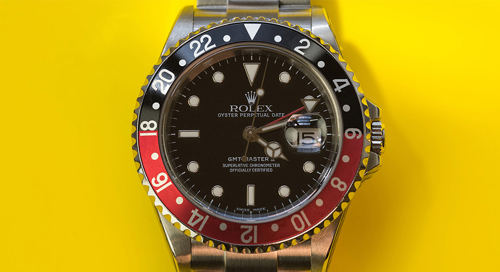
The Patek Philippe Nautilus - rewriting the rulebook: Dominating the pre-owned market in 2019, the Nautilus enjoys an unrivalled reputation as the world’s most desirable luxury sports watch. From its original launch in 1974, its bold styling and definitive porthole shaped bezel broke the mould of traditional slim gold watches, and the move paid off. Today, a Nautilus is an enduringly reliable investment. In particular, look out for original ref.3712 editions, which were discontinued in 2006 to make way for the anniversary edition: the ref. 5711/1A.
The Tudor Submariner - an affordable modern classic: Tudor made a notable comeback in 2009, following its original conception in 1926, when it first came to market as an affordable, yet superb quality, alternative to Rolex. In particular, vintage Tudor Submariners make for a notable yet modest investment, since the model was never relaunched after Tudor’s first collection, which began in 1954. Look out for the ref.7016/0 (nicknamed the “snowflake” by collectors on account of its unique snowflake shaped hand). Alternatively, if you can find a ref. 7923, you’re onto a model that boasts significant rarity, characterised by its calibre 1156-1188 self-wind movement, simple dial and thinner, lighter case.
The Patek Philippe Ellipse - due for a comeback? If you’re looking for something that bucks today’s oversized, sporty trend, why not consider the Patek Philippe Ellipse? The second oldest watch in Patek Philippe’s portfolio, the Golden Ellipse – or Ellipse D’Or - has fallen in an out of favour with collectors over the years. Its deceptively simple design belies some unique features – most notably, its definitive ellipse-shaped dial and automatic calibre 240 which, at just 2.53 mm high, delivers the slimmest timepiece Patek has ever released. Favoured by monarchs from Queen Victoria to Queen Elizabeth II, this is a watch of historic note and timeless elegance, and we suspect that a comeback is due (perhaps there was a hint of things to come in 2015, when Brad Pitt was unusually seen sporting a vintage model in his movie, By the Sea) . The Ellipse, then, is a great example of an investment that could prove to be ahead of its time.
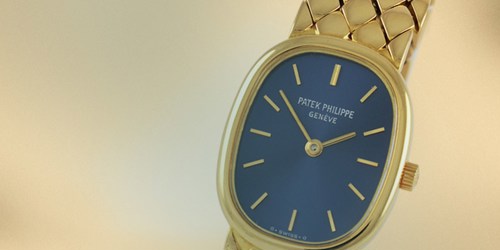
During the Covid-19 crisis, David Duggan Watches remains available to advise you on buying or selling your vintage watch. Simply telephone us on 0207 491 1675 or 020 7491 1362 and we will be delighted to help you find your perfect timekeeping investment.